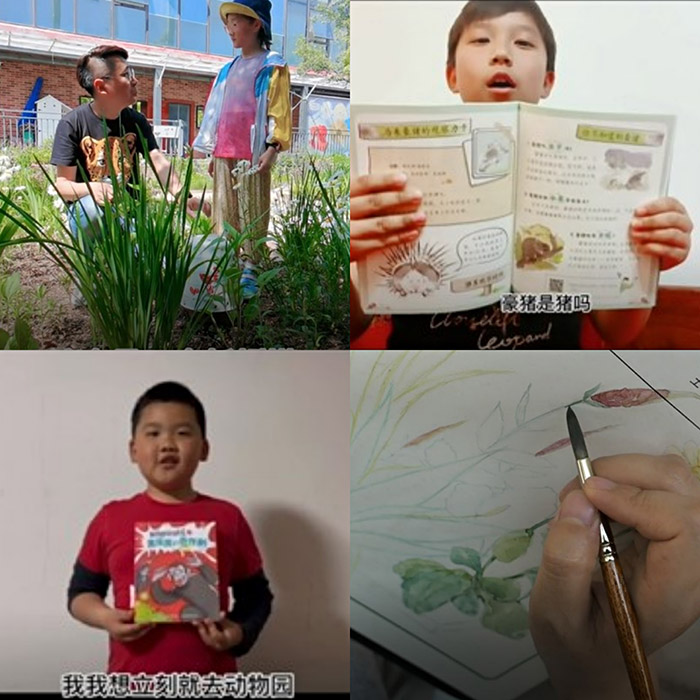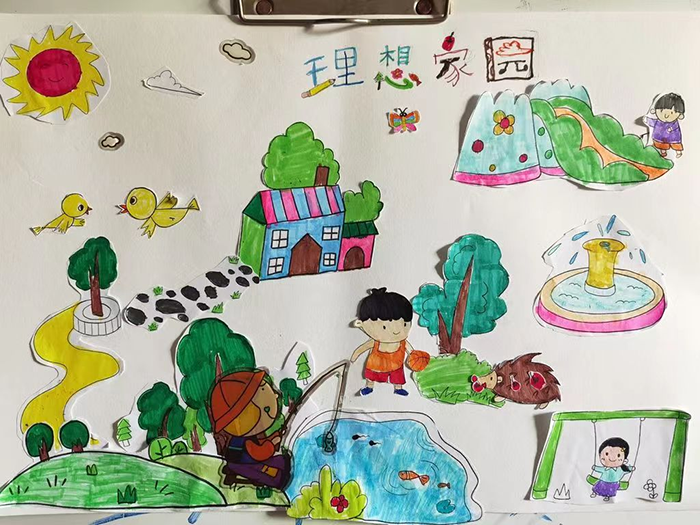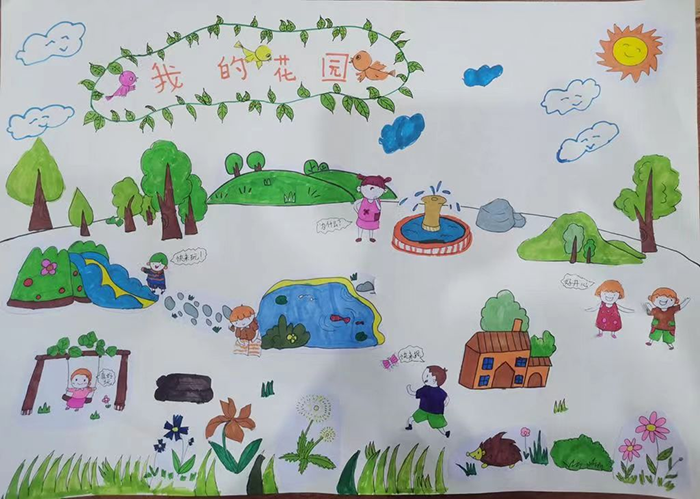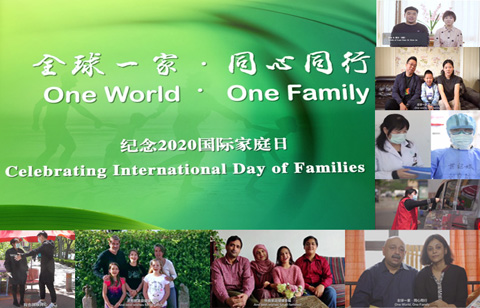Children Encouraged to Explore Neighborhood Gardens, Build an Ideal Community
Date:2022-6-20 14:31:44 Views:
Attendees in the live-stream activity with the theme "Our Community-level Garden: a Virtual Tour to Child-friendly Residential Communities"
To support Beijing’s efforts to become a child-friendly city, Beijing Women's International Center (BWIC), under the guidance of Beijing Women's Federation (BWF), has worked together with the Zhongguancun sub-district office of Haidian District to organize a series of theme activities that will create opportunities for children to take part in community-level governance. BWF has collected typical scenarios with Beijing characteristics and will proactively participate in international exchanges related to the building of a child-friendly city.
During the latest outbreak of COVID-19 since late April in Beijing, local children have to attend classes online at home. Therefore, BWIC has collaborated with its partners in the organization of this year's child-friendly theme activities via video link.
Under the theme "Our Community-level Garden: a Virtual Tour of Child-friendly Residential Communities", a six-hour cross-platform live-stream activity was held on a weekend in June to guide teenagers to make concerted efforts in the building of beautiful gardens and environment governance in their residential communities.
Zheng Yang, a nature photographer, Tian Haichao, an editor with Field Guide to Nature History and Wildlife of Beijing, and Wukong, a graphic designer, were invited to speak with teen audiences about how to further raise personal awareness of environmental protection and a sense of responsibility for the homeland through exploration, cognition, reflection and practice in the four separate stages — Observation of Nature, Books on Nature, Diaries on Nature and Ideal Communities.
The virtual event drew the attendance of 1,100 children, many of whom submitted drawings and other forms of artistic productions to showcase their keen interest.
Observation of Nature: to Explore Community-level Garden
During this stage, the activity brought children closer to nature in a virtual tour, helping them have an initial understanding of the natural environment around them. The annual International Children's Day comes between the end of spring and the beginning of summer, during which all living creatures are growing fast in the wild.
Zheng instructed attendees on the recognition of plants and their blossoming flowers in a visit to a garden in Zhongguancun. Children found that a small slice of green land in our residential communities can satisfy people's needs for leisure and provide wild animals with a habitat.
Meanwhile, Zheng also spoke with children about the structure and theory of “earthworm towers,” which are made of PVC pipes and designed to facilitate the disposal of kitchen waste and pets' droppings at home. Earthworms can enter into the “towers” through a small hole drilled at their bottom to decompose kitchen and pet waste and transform it into organic fertilizer. Many participants said that the “earthworm towers” help them discover the fun of garbage disposal and realize that it is easier for people to lead a "green" life.
Books on Nature: to Acquire Environmental Knowledge
This stage provided children with an opportunity to systematically master the knowledge of the natural environment in their living place. Tian recommended to teenagers a list of books about mineral resources, insects, flowers, weather and climate, in a drive to arouse their curiosity and eagerness and guide them to put forward proposals on the building of a better living space.
On the sidelines of the stages of observation and books on nature, Wukong taught children about how to record what they see and think with paintings from cross-disciplinary perspectives that included natural science, fine arts, and Chinese language. Children were encouraged to become interested in the natural environment, express their feelings and thoughts through painting and take part in public affairs in their residential communities.
Ideal Communities in Colorful Paintings
Prior to the opening of the live-stream activity, organizers uploaded a set of cartoon pictures of infrastructural facilities in residential communities, allowing participants to download and print them in advance. Under the guidance of teachers, children drew pictures of ideal cities in their mind. The cities emerging from their pens were colorful and dynamic.


Paintings show the ideal communities in the eyes of children.
Further reading:
The UN Children's Fund (UNICEF) and the UN Human Settlements Programme (UN-Habitat) jointly launched the child-friendly city initiative (CFCI) in 1996 to promote the formulation and implementation of national strategies and measures on protecting and securing children's development, facilitate the building of child-friendly cities, and uphold children’s lawful rights to subsistence, development, protection and involvement in governance.
The China National Program for Child Development (2021-2030), which was enacted by the State Council, or China's cabinet, in an executive meeting in August 2021, stressed the building of child-friendly cities and residential communities in a section on children and the environment.
The National Development and Reform Commission (NDRC), the National Working Committee on Children and Women under the State Council, and other central authorities jointly issued a guideline on the building of child-friendly cities in September 2021. The guideline noted that China will pilot the CFCI in approximately 100 cities to enshrine the concept of being "child-friendly" for children in the formulation of social policies, the provision of public services, the protection of human rights, and the improvement of living and development environments.
Beijing published its development outlines for women and children (2021-2030) in November 2021. The city will give priority to the development of teenagers and work for the building of a child-friendly city. It will also take their development needs into account in the formulation of social policies, the provision of public services, the protection of human rights, and the improvement of living space and development environments in a drive to advance the principle of Child First and the healthy growth of all children.



